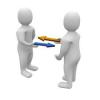
Breaking News
 BREAKING: Federal Agents Descend on Suspected Somali Fraud Sites in Minneapolis (VIDEO)
BREAKING: Federal Agents Descend on Suspected Somali Fraud Sites in Minneapolis (VIDEO)
 BREAKING: Federal Agents Descend on Suspected Somali Fraud Sites in Minneapolis (VIDEO)
BREAKING: Federal Agents Descend on Suspected Somali Fraud Sites in Minneapolis (VIDEO)
 Aargh! Letters of marque would unleash Blackbeard on the cartels
Aargh! Letters of marque would unleash Blackbeard on the cartels
 How a Barter System Could Sustain Communities During a Supply Chain Collapse
How a Barter System Could Sustain Communities During a Supply Chain Collapse
Top Tech News
 EngineAI T800: Born to Disrupt! #EngineAI #robotics #newtechnology #newproduct
EngineAI T800: Born to Disrupt! #EngineAI #robotics #newtechnology #newproduct
 This Silicon Anode Breakthrough Could Mark A Turning Point For EV Batteries [Update]
This Silicon Anode Breakthrough Could Mark A Turning Point For EV Batteries [Update]
 Travel gadget promises to dry and iron your clothes – totally hands-free
Travel gadget promises to dry and iron your clothes – totally hands-free
 Perfect Aircrete, Kitchen Ingredients.
Perfect Aircrete, Kitchen Ingredients.
 Futuristic pixel-raising display lets you feel what's onscreen
Futuristic pixel-raising display lets you feel what's onscreen
 Cutting-Edge Facility Generates Pure Water and Hydrogen Fuel from Seawater for Mere Pennies
Cutting-Edge Facility Generates Pure Water and Hydrogen Fuel from Seawater for Mere Pennies
 This tiny dev board is packed with features for ambitious makers
This tiny dev board is packed with features for ambitious makers
 Scientists Discover Gel to Regrow Tooth Enamel
Scientists Discover Gel to Regrow Tooth Enamel
 Vitamin C and Dandelion Root Killing Cancer Cells -- as Former CDC Director Calls for COVID-19...
Vitamin C and Dandelion Root Killing Cancer Cells -- as Former CDC Director Calls for COVID-19...
 Galactic Brain: US firm plans space-based data centers, power grid to challenge China
Galactic Brain: US firm plans space-based data centers, power grid to challenge China
Tesla Robotaxi Will Have 50% Fewer Parts Than Model 3

Tesla's Robotaxi concept is all about doing more with less. Whether that be parts, humans behind the wheel, or dollars spent on the car itself—the goal is to strip down the car as much as possible to drive down the cost of production.
Tesla has gotten very good at this, as it revealed at the first stop on a public showing tour of the Robotaxi at its flagship showroom at Santana Row in San Jose, California. During a discussion with the principal engineer of the Robotaxi project, it was revealed that engineers have managed to cut the number of parts in the Cybercab prototype down to just half of what's found in the production version of the Tesla Model 3 today.
"Two seats unlocks a lot of opportunity aerodynamically," said Eric, Tesla's lead engineer on the Robotaxi project. "It also means we cut the part count of Cybercab down by a substantial margin. We're going to be delivering a car that has roughly half the parts of Model 3 today."
The most obvious cost-cutting method is ditching that pesky steering wheel and pedals. Who needs those in a car that's supposed to drive itself, anyway? And while we're at it, let's just remove the entire rear seat assembly (and the two doors for the rear passengers). But there are also smaller changes, like only featuring three physical switches: two on the center console—the purpose of which has been argued to be either for the windows or doors—and one for the dome light.
Another example is the roof, which you'll notice is metal rather than glass. Folks on Twitter who were at the event say that while the metal roof may be cheaper and easier to unpack in Tesla's new "unboxing" production method, a Tesla engineer reportedly revealed that it proved to be quieter as well.
And perhaps one of the most behind-the-scenes ways that Tesla saved on parts count is the vehicle structure. According to a user on X who attended the event, the Robotaxi reportedly has just 80 parts in the body structure compared to the current Model Y's 200. Couple that with the car only supporting wireless charging and you'll quickly start to see how all of these tiny corner-cuts add up.



